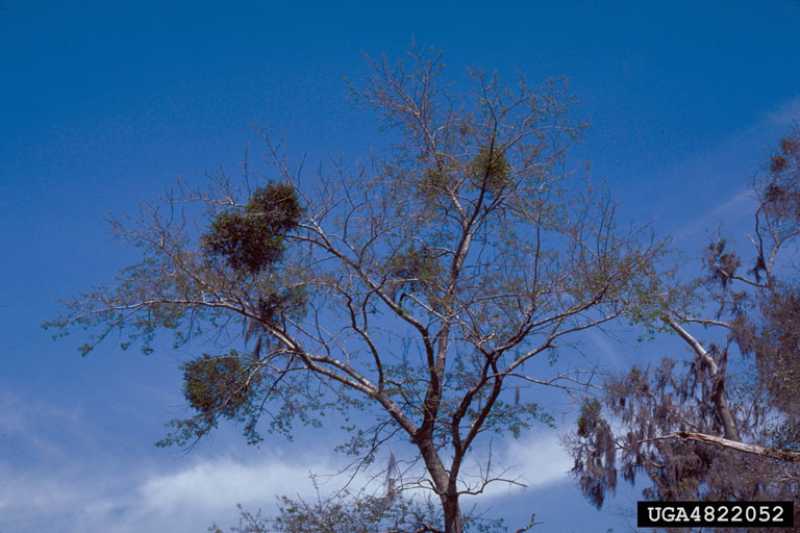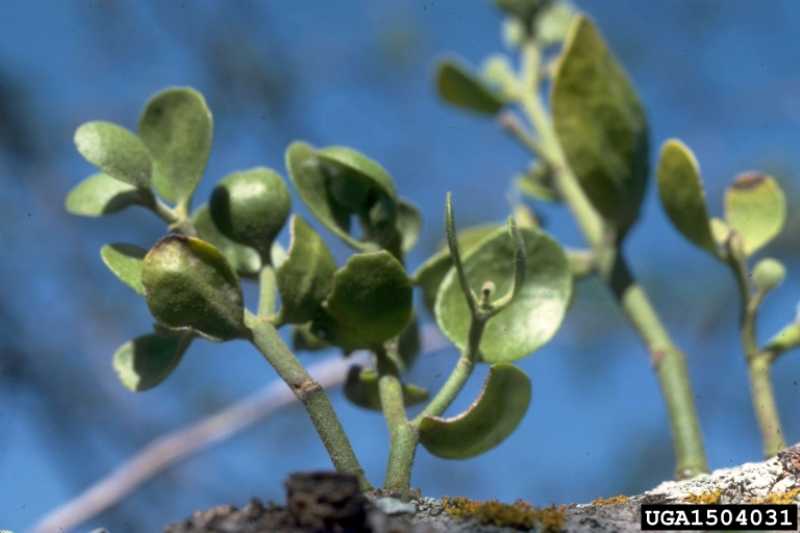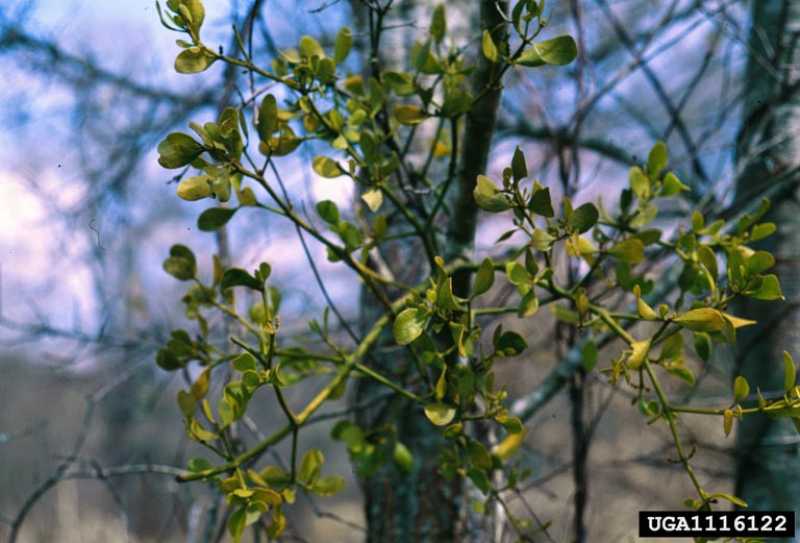 |
Globose clumps of mistletoe established in crown of oak tree (Quercus) as seen in winter. E. Barnard, FDACS, Bugwood.org |
Mistletoes are photosynthetic, seed-bearing plants that are parasitic on the stems of several trees and shrubs from which they tap water and minerals. They occur in the genera Phoradendron, Viscum, and Arceuthobium. They can reduced plant vigor and result in dieback or even death. In North America about 230 species occur in the genus Phoradendron growing in forests below a crescent from New York south to Arkansas and west up to Oregon. Occurrence in Missouri is rare. Viscum album was introduced into California from Europe in 1900. The arceuthobiums are referred to as the dwarf mistletoes and are a serious pest in Canadian forests extending through western North America south to Mexico and Central America.
Life Cycle
Plants in the genus Phoradendron can have either broad-leaves like the familiar mistletoe sold at Christmas time or can have scale-like leaves. Both have short internodes and dense balls of foliage on branches and trunks and usually occur at the top of trees where light intensity is good. The fruits are eaten by birds and the seeds, which have a sticky coating are excreted and attach to young stems where the seeds germinate and penetrate the stem. They infest a wide range of flowering trees and shrubs as well as some conifers, most notably junipers.
Mistletoes in the genus Arcenithoblum are referred to as dwarf mistletoes. The sticky seeds are ejected forcibly from fruits where they spread to nearby stems or plants. Seeds also stick to birds and other animals, which then transport them to other locations.
Integrated Pest Management Strategies
1. Prune out infected branches. If practicable, prune out branches that are infected or cut back shoots to the point of origination. Shoots may regrow and need to be recut every couple of years.
2. Treat with an herbicide. In some situations treatment of mistletoes with an herbicide when the host plant is dormant has reportedly been useful.
Organic Strategies
Strategy 1 is a strictly organic approach.
More images:
 |
| Close-up of mistletoe emerging from Spanish oak (Quercus x hispanica). P. A. Mistretta, USFS, Bugwood.org |
|
 |
| Mistletoe on oak (Quercus). C. T. Bryson, USDA ARS, Bugwood.org |
|